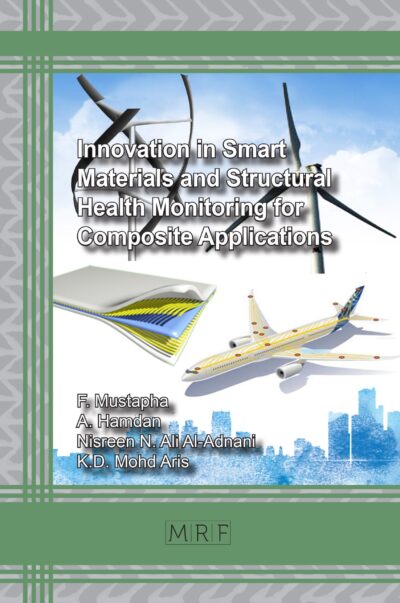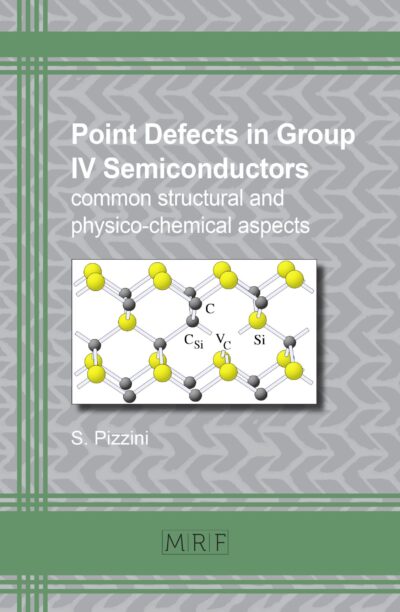Automotive Brake Disc Materials
Costel Dorel FLOREA, Costica BEJINARIU, Nicanor CIMPOESU, Ramona CIMPOESU
Materials Research Foundations Vol. 105
Publication Date 2021, 95 Pages
Print ISBN 978-1-64490-144-1 (release date July 2021)
ePDF ISBN 978-1-64490-145-8
DOI: 10.21741/9781644901458
The book reviews the current status of vehicle brake disc materials and technology. Topics covered include friction materials for braking systems, material characterization, mechanical properties, corrosion processes and methods for disc break investigations. The book references 158 original resources with their direct web links for in-depth reading.
Keywords
Braking Systems, Friction Materials, Car Braking Systems, Mathematical Models, Corrosion, Fractality, Cast Iron, Ceramic Thin Layers, Wear, Profilometry, Electro-Corrosion, Linear Potentiometry, Rainwater
Table of contents
Current Status of Materials used in the Construction of Vehicle Brake Discs 1
1.1 Car- braking systems 1
1.2 Analysis of car-braking systems 5
1.2.1 Tribological elements 5
1.2.2 Analysis of the evolution of brake discs 8
1.2.3 Damage of the braking systems 9
1.3 Materials, technologies and equipment used in the processes of obtaining brake discs 13
1.3.1 Classic friction materials 14
1.3.2 Friction materials with ceramic matrix 15
1.4 Properties of friction alloys used in car braking systems 17
References 18
Corrosion Dynamics in Fe-C Alloy Systems 23
2.1 Nonlinearity and chaos in complex systems such as Fe-C alloys 23
2.2 Chaotic system-complex system transition for Fe C type alloys by fractality/multifractality – the mathematical model 25
2.3 Validation of the theoretical model 28
References 32
Technology, Methodology and Material Basis used in
Experimental Research of Materials for Brake Discs 34
3.1 Research methodology 34
3.2 Methodology for research of brake disc materials 36
3.3 Design and manufacture of friction alloys used in experimental research 38
3.3.1 Obtaining cast iron alloys with chrome 38
3.3.2 Obtaining ceramic layers 40
References 42
Methods and Equipment’s for Disks Brake Investigations 45
4.1 Working methodology and equipment used for the experimental determination of the friction coefficient of alloys 45
4.2 Working methodology and equipment used for the experimental determination of disc surface profiles of experimental alloys 48
4.3 Working methodology and equipment used to determine the wear resistance of experimental alloys 53
4.4 Working methodology and equipment used for experimental determination of corrosion resistance of experimental alloys 54
4.5 Research methodology of the structure and chemical composition of experimental alloys 57
4.5.1 Scanning electron microscopy 57
4.5.2 Dispersive energy spectrometry 59
4.5.3 X-ray diffraction 60
References 62
Research and Experimental Contributions on the Characterization of Materials for the Construction of Vehicle Brake Discs 65
5.1 Experimental research for the microstructural characterisation of metallic materials intended for realization of vehicle brake discs 65
5.1.1 Physico – chemical characterization of experimental Fe – C alloys 65
5.1.1.1 Analyses on the chemical composition 66
5.1.1.2 Hardness measurements 67
5.1.2 Structural characterization of experimental Fe – C alloys 67
5.1.2.1 Structural characterization performed by light microscopy (optical metallography) 68
5.1.2.2 Structural characterization performed by scanning electron microscopy 72
5.2 Analysis of ceramic thin layers obtained by plasma spraying 75
5.2.1 Structural and chemical analysis of the metallic material surface after mechanical processing 75
5.2.2 Structural and chemical analysis of the surface of the metallic material after deposition of the ceramic layer 78
References 84
Mechanical Characterization of the Materials for
Automotive Brake Systems 87
6.1 Profilometry of EN-GJL-250 material and ceramic layers 87
6.2 Analysis of the behavior of experimental materials with ceramic layers at micro-indentation 92
6.3 Experimental determination of the wear resistance of friction alloys 102
6.3.1 Analysis of the wear behavior of experimental samples with chromium additions 102
6.3.2 Analysis of the wear behavior of experimental samples with thin layers 109
References 113
Corrosion Resistance of the Materials used for
Automotive Brake Disks 116
7.1 Experimental analysis of the corrosion resistance of chromium experimental materials 116
7.2 Analysis of the surface layers’ behavior, deposited on cast iron substrate, at electro-corrosion 125
References 131
About the Authors 134














